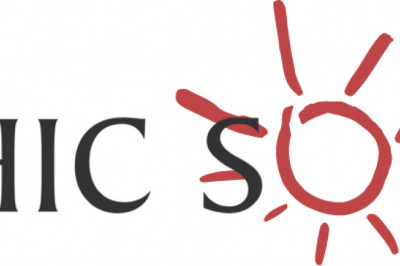views

Refinance Mortgage Calculator | Sun American Mortgage Company
The Best Refinance Mortgage Calculator!
Discover your saving possibilities with our simple and user-friendly Refinance Mortgage Calculator.
This allows you to quickly calculate how much you can save on your mortgage by refinancing your mortgage.

Welcome to the best online refinance mortgage calculator. With this house payment calculator, you’ll be able to easily know how much house you can afford. One of the most important things when seeking a new home, is to really know what your mortgage payment will be, as well as how much home you can afford.
Sun American Mortgage Company is dedicated to helping you navigate your way through this mortgage loan process. We are dedicated to seeing all of our clients succeed. With our in-house processing, underwriting and funding, you’ll feel like we are family!
Click the button below and one of our expert loan officers will contact you and go over your personal scenario. Our pre-qualification process is so easy, and in a matter of minuets, you’ll know for sure what you qualify for and what your actual mortgage payment will be. CLICK HERE!
For most people, a home mortgage is probably the biggest loan they have and represents one of life’s largest commitments. Mortgage lending has been a staple of the housing market and a pillar supporting The American Dream. Yet, it can be an overwhelming and confusing process for many homebuyers.
This guide was created to help you through the basics of mortgages, and home financing. The idea is to give you the foundation to understand how the process works, what factors matter, common pitfalls, and useful resources.
Let’s start with the common components of a mortgage payment. In most cases, your payment will include some combination of the items described below, but variations do occur.
You may see P.I.T.I. commonly referenced as you begin to learn about mortgage payments. P.I.T.I stands for principal, interest, taxes, and insurance.
Mortgage Payment = Principal (amortized) + Interest (amortized) + Real Estate Taxes (pro-rated) + Private Mortgage Insurance (pro-rated)
Principal is the actual amount you borrowed from the lender, and the part of the mortgage you probably care about most. Every time you make a payment, your principal balance decreases, and your home equity – the value of the home in excess of the mortgage obligation – increases.
Interest is the other big chunk of your payment. Interest is accrued annually, as in Annual Percentage Rate, regardless of whether you have a fixed rate mortgage or an ARM. To figure out how much of your monthly payment is going toward interest, all you need to do is:
You’ll notice that, when you are just starting out, the majority of your mortgage payment goes to interest. But every month you pay down a little bit of principal as well. So when you calculate your payment the next month, you’ll notice a little bit less went to interest and a little bit more to principal.
This example is for a fixed-rate, 30 year term, at 5% APR, with $200,000 Principal Balance, and a $1,073.64 monthly payment. (We’ll get to figure out your monthly payment a little later)
First Month:
$833.34 = $200,000 × (.05 ÷ 12)
Second Month:
$240.30 went to principal from the first month’s payment ($1,073.64 – $833.34 = $240.30) so…
$832.34 = $199,759.70 × (.05 ÷ 12)
And, if you paid down an extra $100 of principal in addition to your first month’s payment?
$831.92 = $199,659.70 × (.05 ÷ 12)
This is basically how an amortization schedule works. Since the lender is mostly concerned with collecting interest in return for taking a risk on your loan, they balance the payments in a way that favors interest repayment in the initial years. It also helps stabilize the payments over the entire repayment term, ensuring that your monthly payment remains constant throughout.
Other factors can influence the balance of interest to principal in your payment, such as: changes to your interest rate (in the case of an ARM), re-financing, and lump sum payments toward principal.
Often times, mortgage payments include additional fees. Fees associated with the legal obligations of owning a home, like taxes and insurance, are generally wrapped into your monthly payment.
Private mortgage insurance (PMI) is necessary until you have paid down a sufficient amount of principal to own at least 20 percent of the equity in your home (percentage may vary depending on specific circumstances), or if you’re considered a credit risk. This protects the lender against default.
To ensure you keep the real estate taxes and PMI current, lenders typically set up an escrow account. The portion of your monthly mortgage payment associated with taxes and insurance will be held in escrow until it’s due, sometimes once a year such as with real estate taxes.
For instance, you may pay 1/12th of your total estimated real estate taxes each month as a part of your mortgage. This guarantees that when your payment is due, you have the money available.
PMI Monthly Escrow = (PMI Rate* × Principal Balance) ÷ 12
RE Tax Monthly Escrow = (Tax Assessed Value of Your Home* × Local RE Tax Rate) ÷ 12
Once you’ve paid down a certain percentage of your principal, lenders will generally let you begin paying taxes and insurance directly. Real estate taxes can fluctuate, especially in gentrifying areas, so you’ll probably want to set aside a portion of the payment monthly anyway.
In some cases, as part of closing, you may have to pay for a year’s worth of PMI upfront. The same is true for taxes; you may pay a pro-rated portion of your taxes at closing as well as a monthly portion. Arrangements vary depending on what’s customary in your market, as well as your lender agreement.
These two components play a big role in determining your maximum mortgage loan amount, interest rate, and consequently your monthly payment.
The down payment is the amount you pay toward the principal value of the property. This helps determine your loan-to-value ratio. It also gives the lender confidence that, in the event of foreclosure, the value of the property can cover the remaining principal balance of the mortgage.
In general, you should attempt to provide the biggest down payment you can afford. The bigger the down payment percentage, the lower your interest rate will be and the easier it will be to secure a mortgage.
In some cases, a big down payment can even offer you the opportunity for a non-standard 15-year mortgage, or similar shorter repayment period.
This is not only advantageous from the perspective of an easier-to-secure lower interest rate, but because of the accelerated repayment plan you can literally save tens-of-thousands of dollars on interest over the life of your loan.
Loan-to-value (LTV) ratios represent the relative size of the mortgage, compared to the value of the home. This is important in determining both your interest rate, and the need for PMI.
Even small changes in interest rate can translate into thousands of dollars over the term of the loan. So, working to get the lowest LTV you can will save you money.
LTV % = (Principal $ – Down Payment $) ÷ Principal $
For example:
A $200,000 mortgage at 5% will have you paying the lender approximately $186,000 in interest after 30 years.
Debt to income ratio is the primary calculation mortgage brokers and lenders will use to qualify your ability to repay the loan.
This is one of the most important numbers lenders will reference during the mortgage approval process. The lender will add up all your monthly obligations, including: student loans, insurance(s), bills, and credit card payments.
The total of your monthly obligations will then be divided by your gross monthly income. The resulting percentage represents the portion of your income that your debt constitutes. The lower the percentage, the more likely you are to secure a mortgage with good terms.
Most experts recommend that your debt-to-income ratio should be below 40 percent, so you can comfortably afford paying a monthly mortgage.
This is a great baseline when figuring out affordability, but definitely consider that this is based on your gross (pre-tax) income and does not take into account your tax liabilities, among other monthly expenses.
You should consult a licensed tax professional and/or an attorney to review the tax implications of owning a home.
The above formula is a good start, but lenders and brokers will generally take it a step further and calculate the “front” ratio (housing costs only), then compare that to your “back” ratio (including monthly consumer debt obligations).
This allows lenders to evaluate your information and creditworthiness with and without housing accounted for, as well as understand how much of your total monthly debt obligations are taken up by housing expense.
Mortgage experts say a healthy front-to-back ratio is about 33/38. That means that a borrower’s housing costs should consume no more than 33 percent of their monthly income.
Adding the borrower’s monthly consumer debt to the housing costs should amount to a maximum of 38 percent of monthly income, in order to meet sound mortgage payment requirements (or, in relative terms, 87 percent of your monthly debt is from housing).
Rationally evaluating your debt-to-income ratio can help prevent the purchase of your dream home from turning into an endless nightmare. Don’t agree to a “surprisingly generous” loan offer if you think you can’t handle it.
I’ve been in the mortgage industry since 1978 and love to fly across Arizona in my single engine airplane to help various consumers learn and obtain a reverse mortgage. Give me a call today!
Fill in your details and I’ll get you a free mortgage payment quote!
Read the terms and conditions HERE.
Fill in your details and we’ll get you a free refinance quote!
Read the terms and conditions HERE.
Fill in the form below and let’s connect to discuss what’s possible for you!
Read the terms and conditions HERE.
Read the terms and conditions HERE.
















